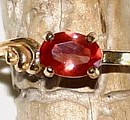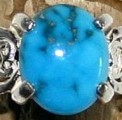

 |
|
 |
Casting Gold Using The Lost Wax Method Modern jewelers have chosen gold as their primary medium because of the versatility and almost limitless creative possibilities. In addition to the intrinsic, never changing beauty of gold in this consider precious blood cultures across the world gold is eminently workable. It can be hammered into sheets of infinite thinness. It can be drawn out into wires of incredible fineness, and it can be formed into designs of subtle grace. No other metal behaves as gold does. The material itself has been the inspiration of some of the most brilliant and intricate craftsmanship ever achieved. It was the love of gold that lead men to constantly expand and refine the jewelry making techniques. Or early goldsmiths fabricated their own water a sheet and tubing from gold ingots, today's gold refiners provide jewelry manufacturers with these materials made to precise tolerances and mirror finished by polishing tools and hardened steel dies. Interestingly enough, many of the sophisticated procedures used in the jewelry industry today are based on centuries old techniques. Lost wax casting is an ancient art. The technique was first employed by the early Egyptians but it was also independently discovered and used tribal artists in South America who used it to cast pre-Columbian gold. It was rediscovered by the great Renaissance goldsmith Benvenuto Cellini. While modern versions of the lost wax process employee a few differences, such as industrial vacuums to pull the molten gold down into the mold, the lost wax method used today is really very similar to that employed by the goldsmiths of Egypt and the pre-Columbian tribes. The Lost wax method is practical for casting both gold and silver alloys. Although it is most commonly used for rings and bracelets, the lost wax process can be used for casting a variety of objects. This method is currently used to create about 60% of all karat gold jewelry, as well as a significant part of all silver jewelry, enabling manufacturers to produce pieces in multiple numbers at a favorable production cost. The lost wax method allows jewelry artists to copy the finest detail into a gold casting. The jewelry produced by casting can also be subject to further treatment by soldering on additional items, etc. |
|
|
|
||
|
The modern version of the lost
wax casting process can be described as follows: 1) From an original design a
model is made in metal. A rubber mold is then made from the model. While the lost wax process is most often used to make jewelry, it is also the same process that is used to make gold teeth for dental work. The dentist will make a copy of the tooth, and this is later cast into wax and used in a lost wax process. |
|
|
|
|
||
Want to know a little bit more about this crazy prospector guy? Well, here's a little bit more about me, and how I got into prospecting: Chris' Prospecting Story